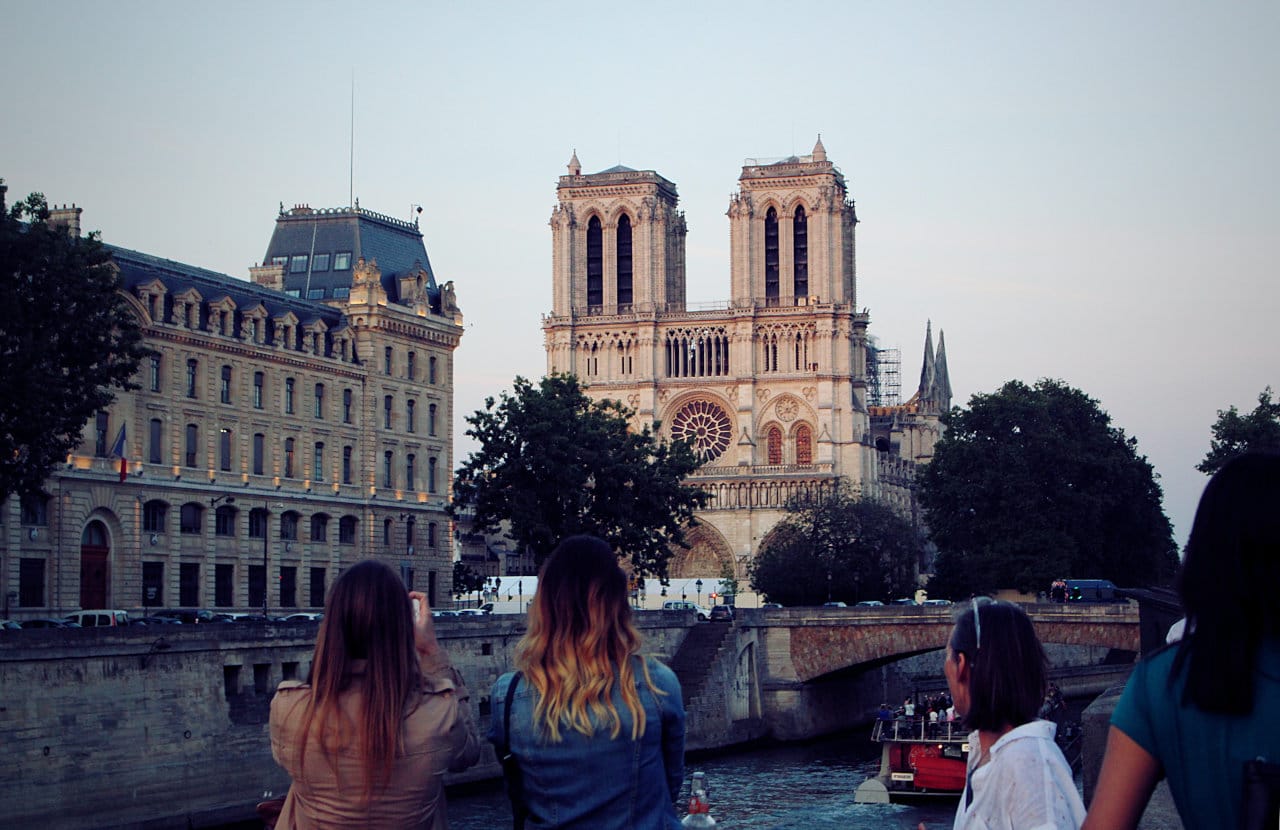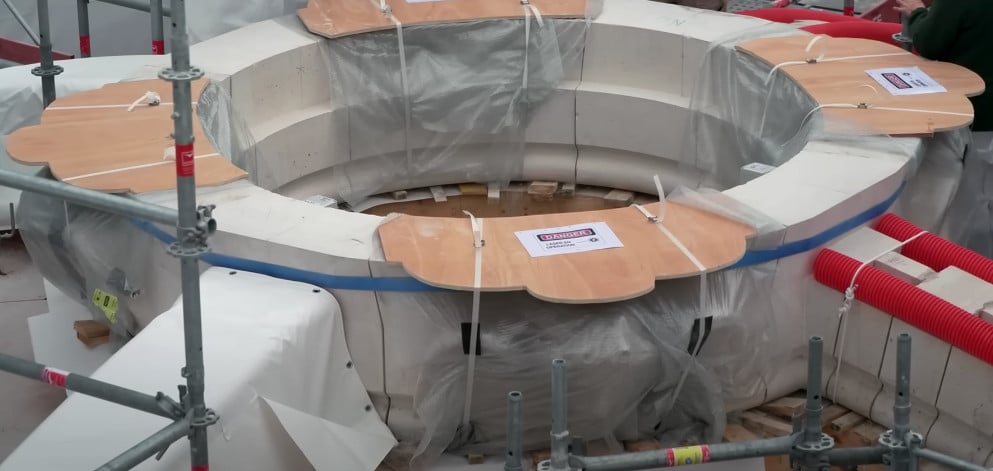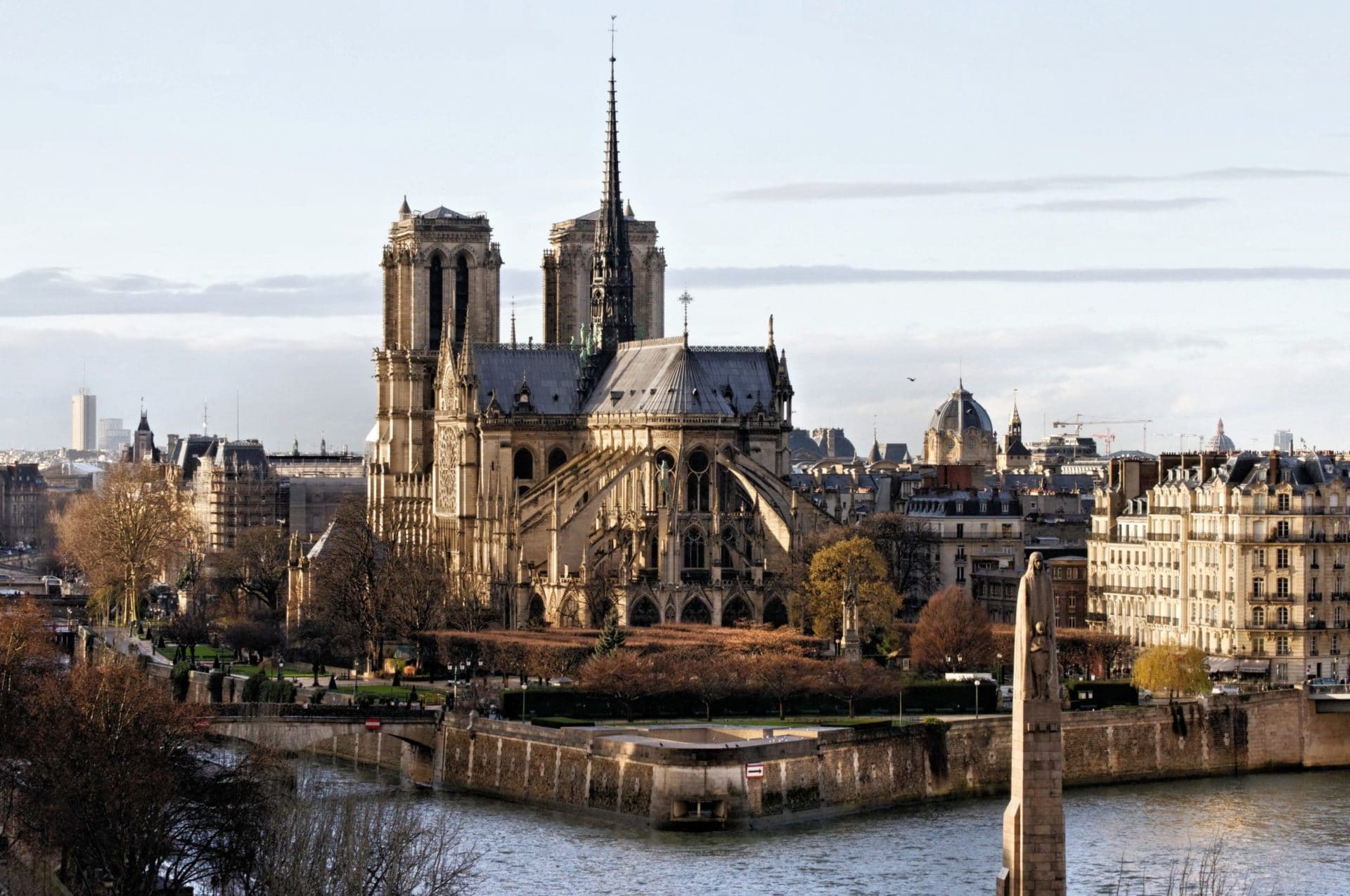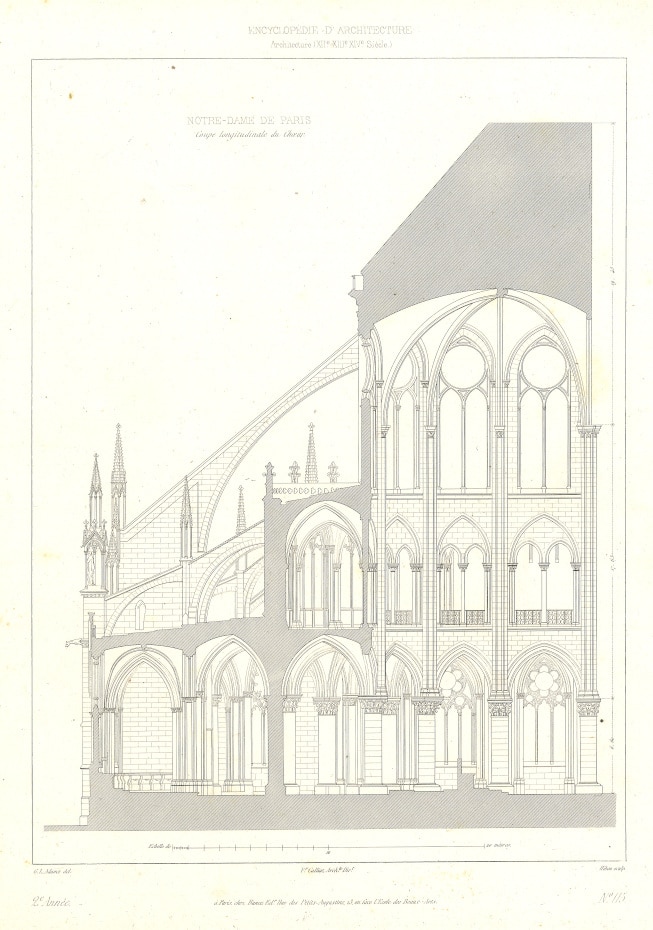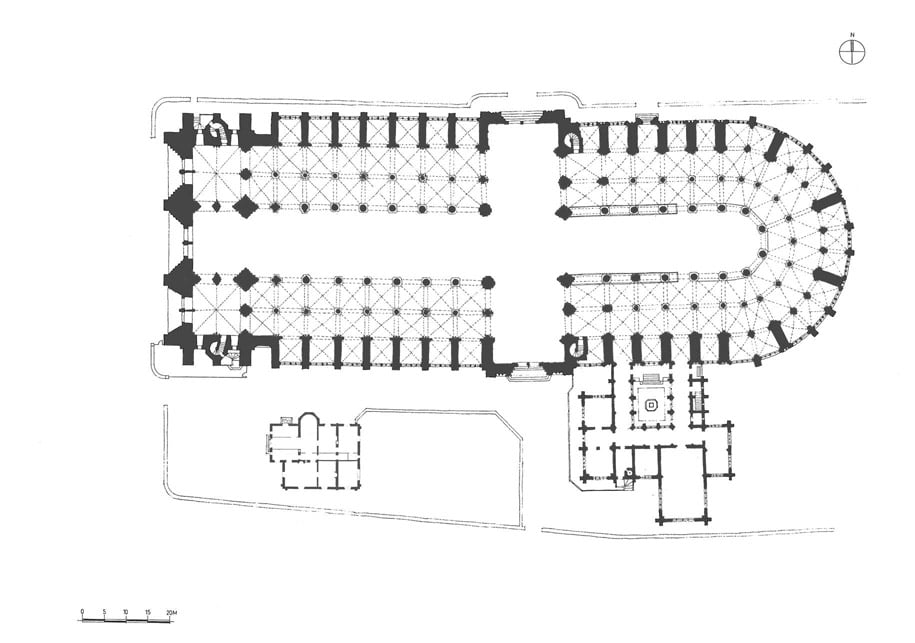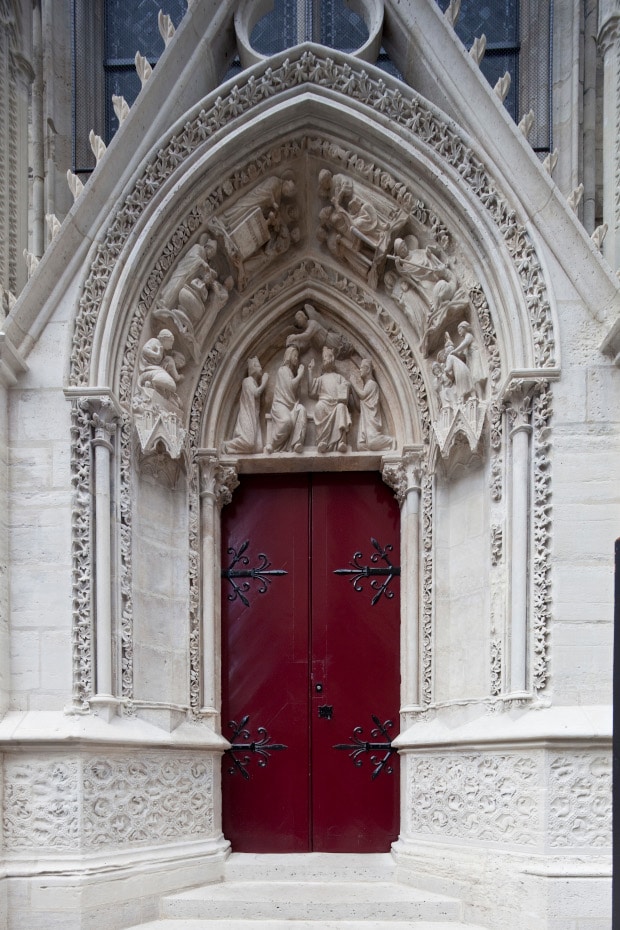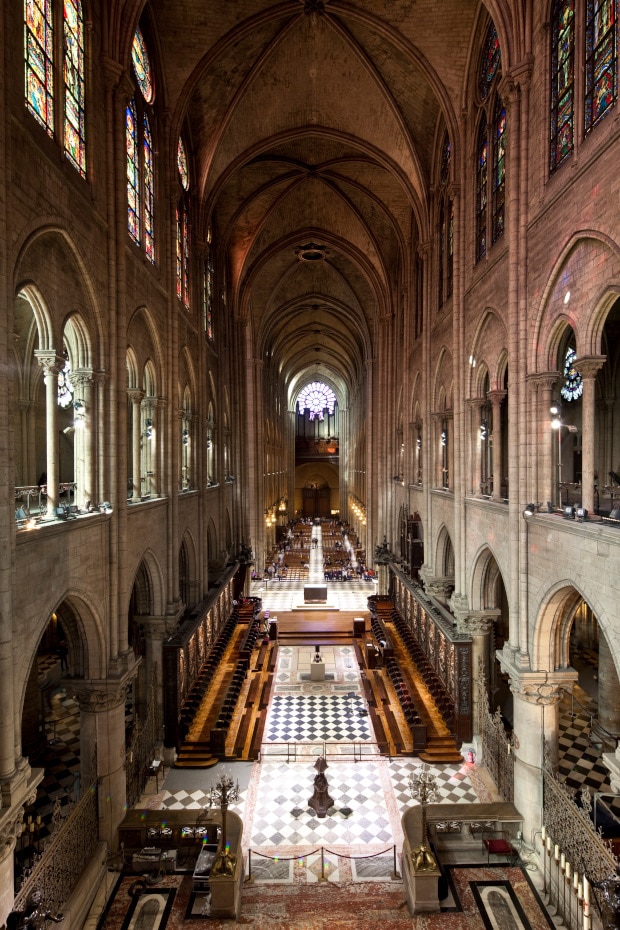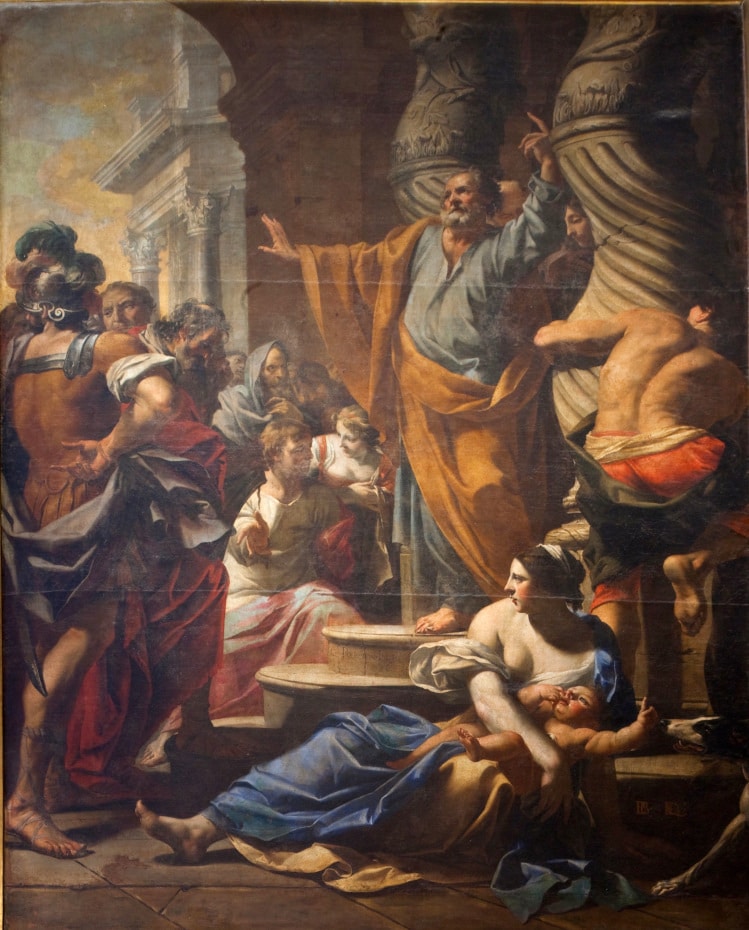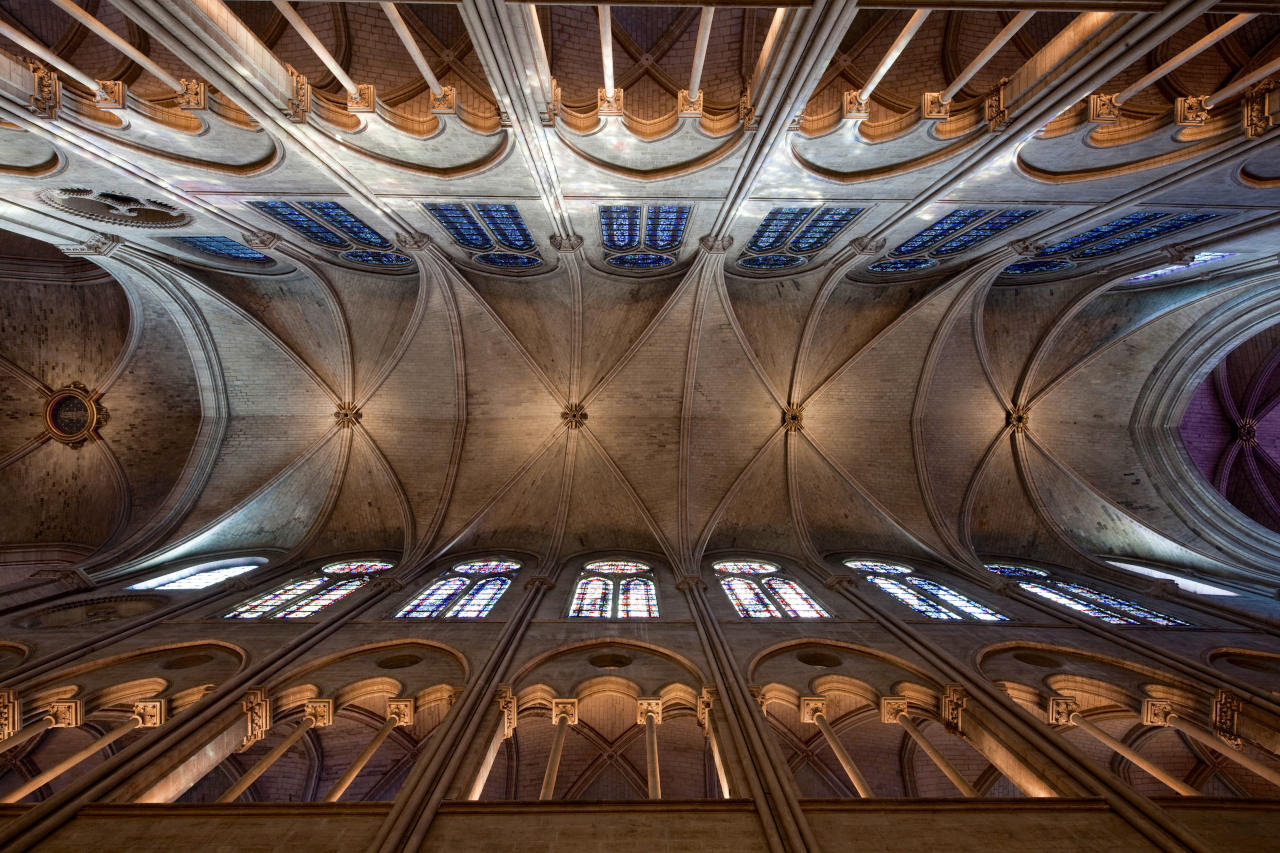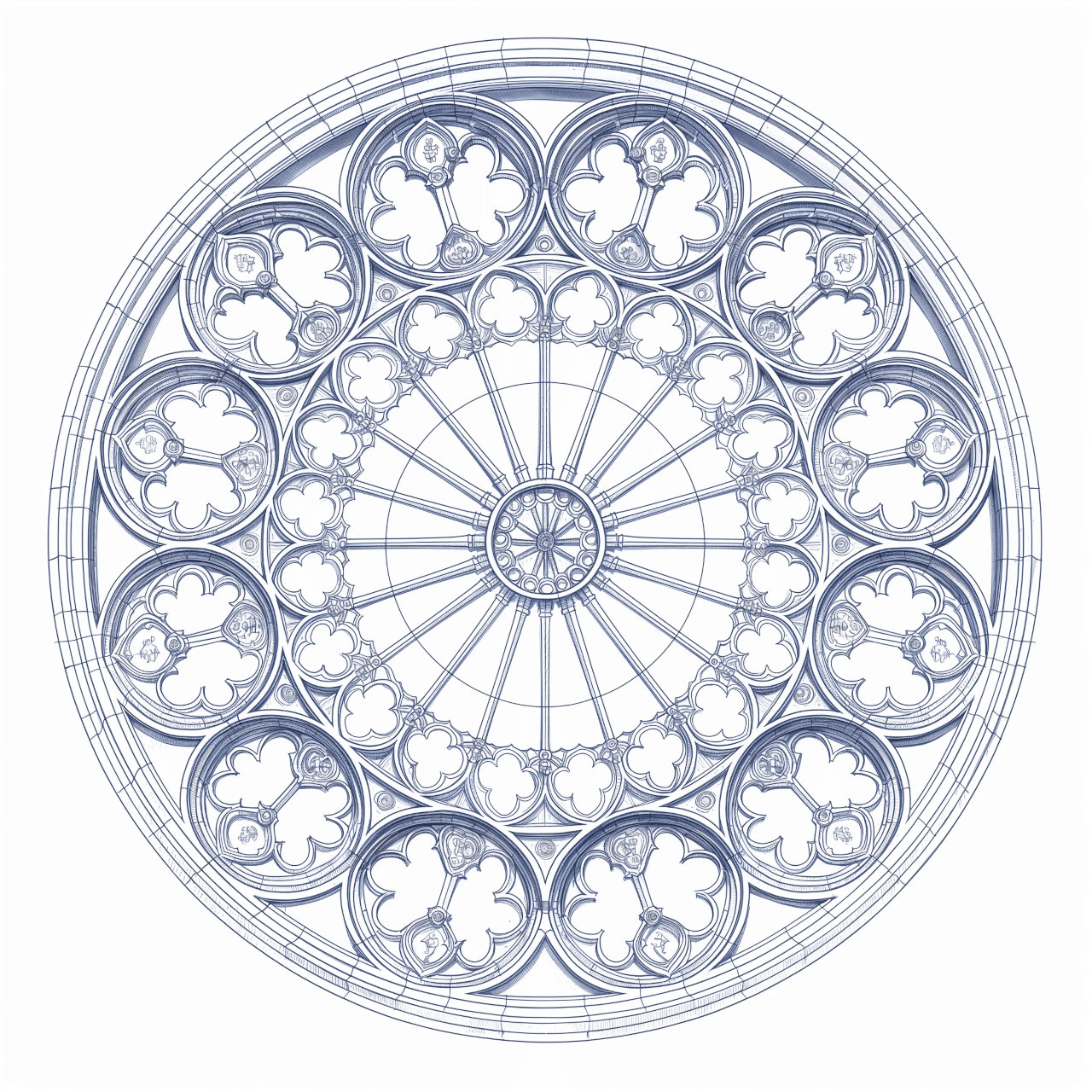Notre Dame Cathedral Fast Facts
Notre Dame de Paris dates back to the 12th century. Designated a UNESCO World Heritage site with Paris Banks of the Seine, it is one of the most beloved monuments in the world, visited by more than 12 million people every year before the fire.
- Length: 420 feet (128 meters)
- Width: 157 feet (48 meters)
- Nave roof height: 115 feet (35 meters)
- Tower height: 226 feet (69 meters)
- Spire height: 315 feet (96 meters)
- Only one of the cathedral’s three great rose windows retains its original 13th century glass
What year was the Cathedral of Notre-Dame built?

Is the cathedral open?
No, the cathedral remains closed to the public until further notice. Notre-Dame de Paris is scheduled to reopen to the public by 2024.
The cathedral is still under restoration and reconstruction from the fire. No interior visits are possible at this time. In the meantime, you can explore Notre Dame virtually.
The cathedral’s “parvis” (an enclosed area in front of a cathedral or church) is accessible to the public since May 2020.
Where is Notre Dame located?
Notre Dame Cathedral is a medieval Catholic cathedral located on the eastern end of Île de la Cité in Paris (small island in the Seine River). According to historians, Notre Dame de Paris was built on the ruins of earlier religious sites: a Roman temple dedicated to Jupiter and an early Christian Romanesque basilica.
Which arrondissement is it in?
Notre Dame is located in the 4th arrondissement of Paris.
Notre Dame de Paris address
Address: 6 Parvis Notre-Dame – Pl. Jean-Paul II, 75004 Paris, France
Is Notre-Dame the world’s oldest cathedral?
While Notre-Dame Cathedral is undoubtedly one of the most renowned and emblematic examples of Gothic architecture, it is not the oldest cathedral in the world. The construction of Notre-Dame de Paris took place between the 12th and 14th centuries, but there are several cathedrals worldwide that were built earlier.
Some of the older cathedrals encompass:
- The Cathedral of San Juan Bautista in Spain, constructed in the 11th century.
- The Cathedral of Santiago de Compostela in Spain, consecrated in 1211, with sections dating back to the 9th century.
- The Cathedral of Aachen in Germany, completed in the 9th century, standing as the oldest cathedral in Northern Europe.
- The Basilica of San Giovanni in Laterano in Rome, Italy, with roots tracing back to the 4th century, recognized as the oldest cathedral in the Western world.
As these examples demonstrate, several cathedrals predate Notre-Dame de Paris. Nevertheless, a cathedral’s age does not detract from its historical or architectural importance, and Notre-Dame remains a cherished and iconic edifice.
Notre-Dame Cathedral: A Masterpiece of Architectural Splendor
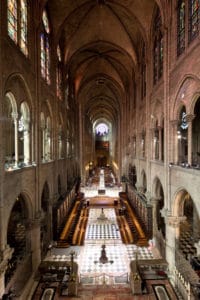
Constructed over the course of two centuries, from the 12th to the 14th with modifications made in the 18th century and a major restoration project in the 19th century, Notre-Dame Cathedral represents the progression from Romanesque to Gothic architecture. Its impressive façade is adorned with an array of intricate sculptures, each telling the tale of various biblical figures and events, and showcasing the talent of the artisans involved in its creation. The entrance is framed by three ornate portals – the Portal of the Virgin, the Portal of the Last Judgment, and the Portal of Saint-Anne – each bearing its own distinct narrative and symbolism.
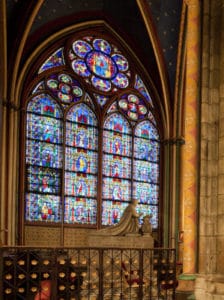
The interior of Notre-Dame is equally majestic, featuring a grand nave, elaborate rib vaults, and towering columns that create a sense of elevated space and height. The choir and high altar, situated at the core of the cathedral, are embellished with intricate carvings and artistic masterworks, inviting visitors to linger and reflect.
Over the centuries, Notre-Dame Cathedral has endured the tests of time, conflict, and a devastating fire in 2019. Yet, its persistence and the ongoing restoration efforts speak to the unwavering spirit of the French people and their dedication to preserving this invaluable cultural gem. As a testament to human creativity and spiritual yearning, the exceptional architecture of Notre-Dame de Paris will continue to fascinate and inspire generations to come.
Notre Dame Cathedral went through 5 major phases of construction:
- Initial Construction
- Modifications and Adornments
- Ongoing Modifications and Improvements
- Major Restoration
- Rebuild and Restore
Discover related Architecture pages
Discover the Construction of Notre-Dame Cathedral Through Time
Venture on an enthralling exploration of the many centuries that shaped the world-renowned Notre-Dame de Paris. This magnificent cathedral has experienced countless transformations, each adding to its stunning allure. Click below to view an intriguing video that highlights the various stages of the cathedral’s development, from its foundations in the 12th century up to the present-day restoration projects. Don’t let this unique opportunity pass you by – delve into the complex details, remarkable architecture, and the rich legacy of the skilled craftsmen who crafted this enduring work of art. Experience the captivating story of Notre-Dame Cathedral like never before!
Notre Dame’s History

By the 19th century, Notre Dame de Paris had fallen into disrepair and was in dire need of major restoration. Victor Hugo sounded the alarm in his novel The Hunchback of Notre-Dame, which brought renewed interest in the cathedral and its fate.
Apart from cleaning the cathedral’s western façade in the 1990s, Notre Dame Cathedral did not have any significant restoration work in over 150 years. As a result of time, weather, pollution and the inferior quality of stone used in the 19th century restoration, the cathedral was again in dire need of repair. To address these critical conditions, a second major renovation project was launched by the French government in 2018.
On April 15, 2019, the entire scope of the project changed when a devastating fire broke out under Notre Dame Cathedral’s roof. The fire destroyed the spire and caused extensive damage to the roof, vaults and interior of the cathedral.
Now, the mission is to rebuild Notre Dame Cathedral. French President Emmanuel Macron has declared a deadline of opening the cathedral to the public by 2024, with renovation and restoration efforts continuing in the years beyond.
Discover related History pages
Explore Notre Dame de Paris virtually through its artifacts
Today, Notre Dame consists of a choir, apse, transept and a nave flanked by double aisles and square chapels. The central spire that was destroyed in the 2019 fire was added during restoration in the 19th century, replacing the original, which had been completely removed in the 18th century because of instability.
